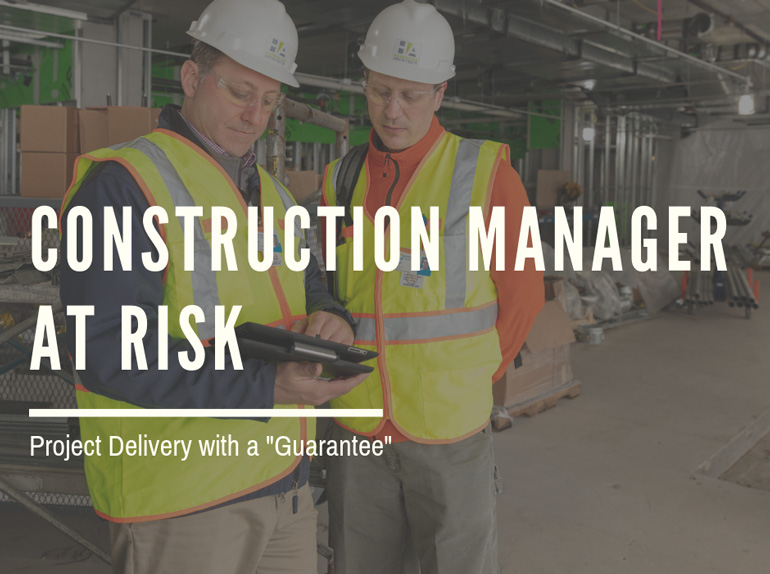Categories

CMR: Project Delivery with a Guarantee
By Dennis Check, AIA
Construction Manager at Risk (CMR) has gained popularity in recent years, having been accepted as a permissible delivery method for public projects and eliminating a few of the cost variables of some of the other methods. In this method, the architect signs a contract with the owner and begins design of the project. Shortly after, a CMR is selected in a qualifications-based (usually a qualifications package and interview) process. The architect usually advises the owner in this selection.
Once the CMR signs a contract with the owner, the architect and CMR work closely together through the various design phases. The CMR’s primary responsibility is to ensure the project cost and scope parameters align with the owner’s expectations throughout the design stages. The CMR will provide detailed estimates after each phase of design. The project’s design will be adjusted to meet scope and budget requirements at each of these milestones. When the construction documents are near completion, the CMR will provide the owner with a Guaranteed Maximum Price, or GMP.
Given that the cost of the project has been monitored throughout the design process, the GMP should be comparable to the owner’s initial expectations. This method eliminates the possible gap between the architect’s estimate and the contractor’s bids in a traditional DBB approach.
With close cooperation between the architect and CMR, this approach also allows for various early packages of construction documents to be produced, which can accelerate the project’s schedule.
At completion of the construction documents phase, the CMR will solicit bids from various subcontractors to solidify the GMP. In some cases, the CMR can return some “bid day” savings to the owner from this exercise.
From that point, construction begins with full-time supervision from the CMR. The architect provides construction observation services as well. All contractors and sub-contractors are under contract with the CMR.
This delivery method is more costly than a traditional DBB arrangement. The CMR will command a fee of about 10% of the construction cost for profit, personnel, and funding of a project contingency for the project duration. Anything remaining in this contingency at the end of the project is returned to the owner. For many owners, this additional cost is acceptable to confirm, via a GMP, that the project will not cost more than anticipated. In theory, the CMR is responsible for any cost overruns not attributable to unforeseen conditions or owner requests.
Pros to CMR
- Acceptable approach for both public and private projects
- Owner can select the CMR with a qualifications-based process, with the aid of the architect
- Cooperation of design and construction teams early in the design process
- Ability to accelerate construction via early construction document packages
- “Guaranteed” price to the owner
Cons to CMR
- Additional cost to the project (to mitigate risk)
- Possible overestimation of construction costs in early design phases, resulting in elimination of program elements
Consider this delivery system if:
- Additional cost is tolerable in exchange for a familiar contractor
- Additional cost is tolerable in exchange for a “guaranteed” price
- Additional cost is tolerable for more management of the process by the CMR vs. owner’s staff
- Acceleration of the schedule is desired
- You have a desire to have a contractor as part of the team from the early stages of the project
Construction Manager at Risk Project Examples
For an overview of other popular project delivery methods, click here. We’ll be featuring another popular project delivery method soon so follow us on Facebook, Twitter and Instagram to be the first to know when new posts are published!